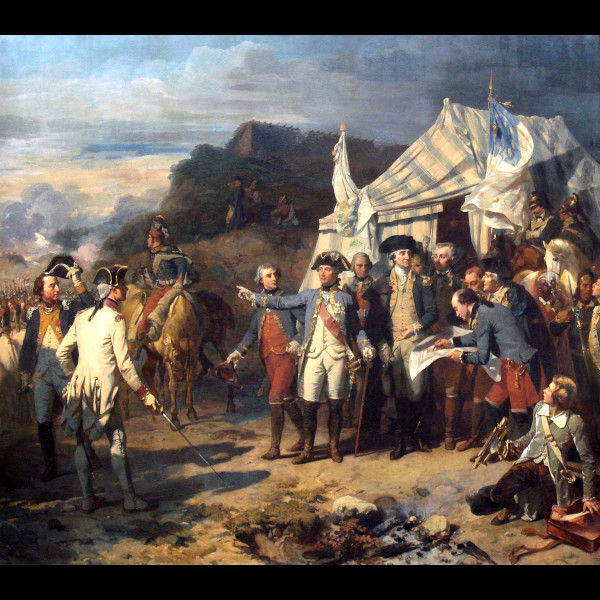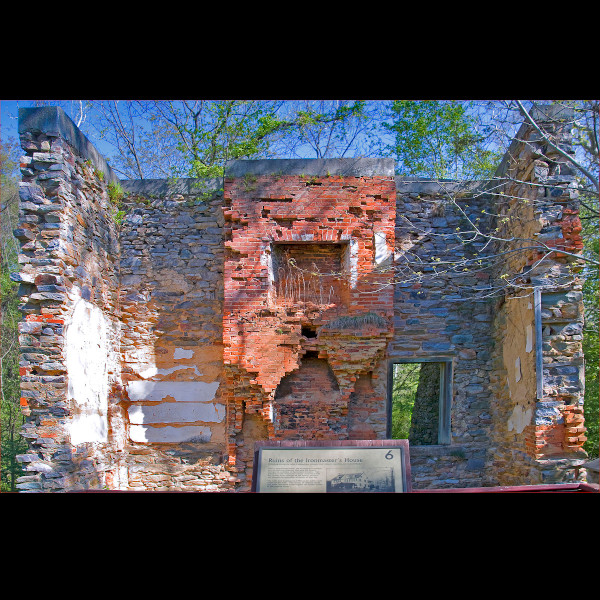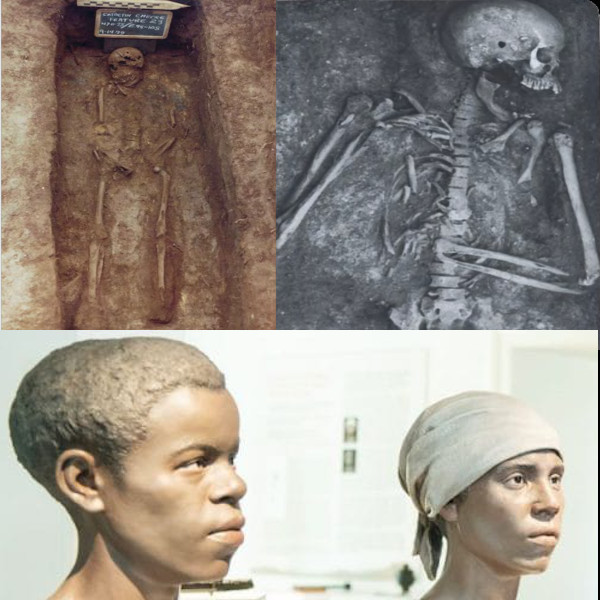DNA spotlight
Catoctin Furnace Antebellum Maryland
The Johnson brothers named James, Baker, Roger and Thomas bought land at the foot of the Catoctin Ridge in Maryland and built an iron furnace. Discoveries of large iron ore deposits gave rise to a thriving iron smelting industry. By 1776 the Catoctin furnace was churning out tools and household items. Within a few years this included iron munitions for the Continental Army including large quantities of cannonballs. Skilled workers operated the furnace and historical evidence shows African slaves were chosen with backgrounds in iron manufacturing - making up approximately half of the workforce.

As production was in full swing, the Battle of Yorktown raged nearby. This was the turning point in the Revolutionary War which led to defeat for British General Cornwallis at the hands of the American Continental Army and the end of the war. This painting shows General Washington and French general Rochambeau giving their last orders before the battle. Key to the success of this battle was the ammunition and cannonballs produced by none other than the Catoctin Furnace. The furnace was known for its high quality products and is believed to be the source of armour plating for the USS Monitor, the famous ironclad of the Civil War years later.

The furnace complex is large and consists of many buildings - shown here are the ruins of the Ironmasters house - which had 18 rooms and offered a commanding view of daily furnace operations. In 1979 archaeologists discovered 35 sets of remains nearby in an unmarked cemetery for African slave ironworkers. Genetic tests confirm they were either first or second generation African immigrants who died between 1790 and 1840. DNA evidence reveals an equal number of men and women arranged in related groups who either arrived together from Africa or quickly formed families upon settlement.

Evidence also indicates many laborers were skilled smelters and blacksmiths who knew how to operate the Catoctin furnace effectively. Surviving documents reveal these iron workers were provided cash and supplies for overtime work. Visible here are remains from the dig and reconstructed busts of a teenage boy and 30 year old woman - both can be seen in the Museum bringing you face to face with the past. Today the Catoctin Furnace welcomes visitors and includes numerous restored buildings which can be visited. The nearby Collier Log House was home to furnace workers and their families for over two centuries. The Museum of the Ironworker was a workers stone house built in the 1820 which today displays numerous artifacts and of course the two forensic facial reconstructions hilighted in this DNA Spotlight.
Sample: Enslaved Adult Female Laborer Catoctin Iron-Working Furnace Antebellum Maryland
- Sample ID: I8097
- Year: 1810 AD
- Sex: Female
- Location: 39.5791857,-77.4415347
Sample: Enslaved Teenage Male Laborer Catoctin Iron-Working Furnace Antebellum Maryland
- Sample ID: I8092
- Year: 1810 AD
- Sex: Male
- Location: 39.5791857,-77.4415347
Sample: Enslaved Laborer Catoctin Iron-Working Furnace Antebellum Maryland
- Sample ID: I15330
- Year: 1810 AD
- Sex: Male
- Location: 39.5791857,-77.4415347
Sample: Enslaved Laborer Catoctin Iron-Working Furnace Antebellum Maryland
- Sample ID: I15331
- Year: 1810 AD
- Sex: Male
- Location: 39.5791857,-77.4415347
Sample: Enslaved Laborer Catoctin Iron-Working Furnace Antebellum Maryland
- Sample ID: I15332
- Year: 1810 AD
- Sex: Female
- Location: 39.5791857,-77.4415347
Sample: Enslaved Laborer Catoctin Iron-Working Furnace Antebellum Maryland
- Sample ID: I8084
- Year: 1810 AD
- Sex: Male
- Location: 39.5791857,-77.4415347



